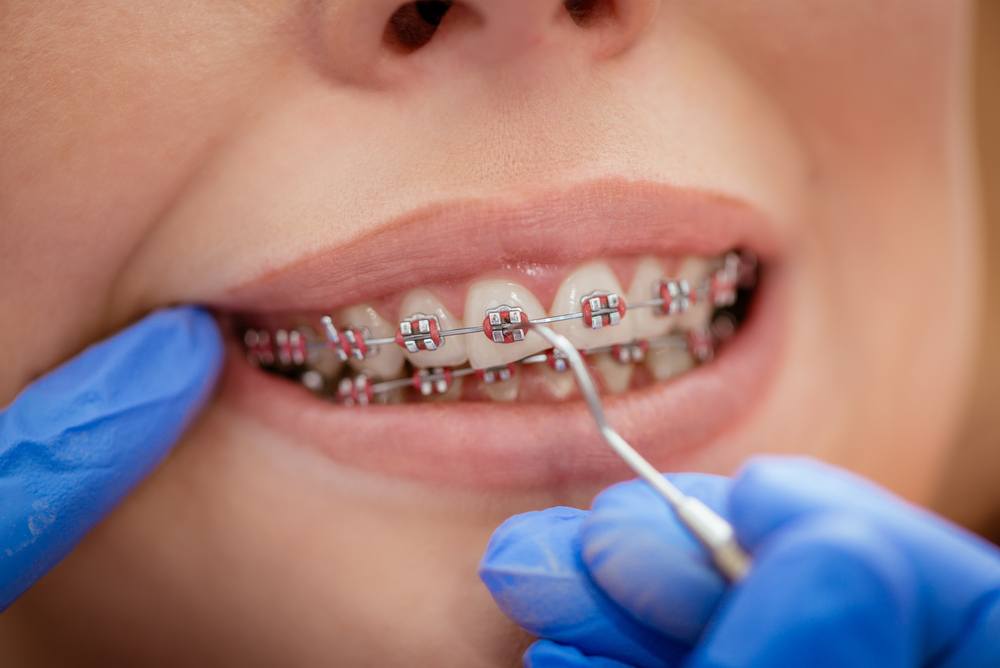Your Overview to Cumming Invisalign: Straightening Teeth with Style and Comfort
Your Overview to Cumming Invisalign: Straightening Teeth with Style and Comfort
Blog Article
Comprehensive Overview to Orthodontics Procedures for Remedying Oral Misalignments
In the world of orthodontics, the trip to achieving a perfectly straightened smile entails a myriad of procedures tailored to remedy oral imbalances. From conventional braces to unseen aligners and even medical choices, the field of orthodontics supplies a range of options to resolve varying degrees of oral irregularities. Recognizing the intricacies of each procedure, including their mechanisms, advantages, and possible drawbacks, is critical in making informed choices concerning one's orthodontic treatment. As we browse through the comprehensive guide to orthodontic treatments for fixing oral misalignments, the complex information of each technique will unravel, clarifying the path toward a unified and useful dental alignment.
Orthodontic Procedures Summary

Routine changes and surveillance are essential parts of orthodontic treatment to guarantee development is on track and to make any kind of essential alterations along the method. By undertaking orthodontic treatments, individuals can not just accomplish a straighter smile however likewise improve their overall oral wellness and function.
Conventional Braces: How They Function
When taking into consideration orthodontic therapies for dental imbalances, typical braces stand out as a tried and true technique for fixing teeth positioning. Traditional dental braces contain braces, cables, and bands that interact to use constant pressure on the teeth, slowly moving them into the preferred positioning. The brackets are connected to the teeth using an unique adhesive, and the cables are threaded with the brackets. By changing the stress of the cables, orthodontists can manage the instructions and force put on each tooth, guiding them right into proper placement gradually.
As pressure is used to the teeth via the dental braces, the bone bordering the teeth is improved to sustain the brand-new tooth settings. Individuals will certainly need routine modifications at the orthodontist's office to guarantee the braces proceed to use the right pressure for efficient teeth movement.
Unnoticeable Aligners: Advantages And Disadvantages
These clear, personalized trays are practically invisible when used, making them an attractive option for people seeking a much more aesthetically pleasing orthodontic therapy. Patients can get rid of the aligners before consuming or brushing their teeth, lowering the danger of food obtaining stuck in the device and simplifying the cleansing procedure.

Surgical Orthodontic Options
Surgical interventions in orthodontics present sensible choices for addressing intricate dental imbalances that might not be effectively resolved through conventional orthodontic therapies. While standard braces and invisible aligners can click to read deal with lots of orthodontic issues, specific situations require medical intervention to achieve optimum results. Surgical orthodontic options are normally suggested for serious malocclusions, considerable jaw inconsistencies, and situations where the underlying bone structure requires adjustment to achieve correct placement.
One typical surgical orthodontic treatment is orthognathic surgical procedure, which includes repositioning the jaws to deal with practical issues such as trouble chewing or speaking. This surgical procedure is usually done in collaboration with an orthodontist who helps straighten the teeth before and after the procedure. Surgical orthodontics might also involve treatments to expose influenced teeth, eliminate excess periodontal tissue, or improve the jawbone to produce a much more unified face profile.
Before considering medical orthodontic choices, people undergo an extensive evaluation to establish the requirement and potential benefits of such treatments. braces. While surgical procedure may seem daunting, it can substantially boost both the function and looks of the smile in instances where conventional orthodontic treatments drop short
Retainers and Post-Treatment Treatment

Post-treatment care entails adhering to the orthodontist's instructions vigilantly. This may consist of appropriate dental hygiene practices, going to follow-up consultations, and wearing the retainers as prescribed. Failure to adhere to post-treatment treatment guidelines can cause regression, where the teeth progressively relocate back in the direction of their original settings. Constant retainer wear, excellent dental health, and normal oral check-ups are important for preserving the results attained through orthodontic surgical procedure and making certain the long-term security of the corrected oral placement.
Final Thought
In final thought, orthodontic procedures supply numerous choices for fixing dental misalignments. Traditional dental braces make use of steel braces and cords to change teeth right into proper alignment. Undetectable aligners offer an even more very discreet choice yet may not appropriate for all instances. Surgical orthodontic options are readily available useful content for a lot more severe imbalances. Retainers are typically made use of post-treatment to preserve the brand-new alignment. On the whole, orthodontic procedures can properly enhance oral health and visual appearance.
As we navigate with the extensive overview to orthodontic procedures for dealing with dental imbalances, the elaborate information of each method will certainly unravel, dropping light on the course towards a harmonious and useful oral alignment. - orthodontist
One of the most common orthodontic therapies is the usage of braces, which are composed of metal brackets and cables that use mild pressure to gradually shift teeth right into the wanted position.When taking into consideration orthodontic treatments for oral misalignments, typical braces stand out as a reliable method for remedying teeth positioning. Furthermore, unnoticeable aligners might not be ideal for intricate orthodontic issues that call for more significant teeth motion, as they are normally advised for light to modest cases. Retainers are personalized orthodontic tools made to hold teeth in their dealt with placements after the conclusion of orthodontic treatment.
Report this page